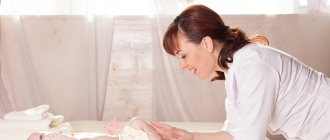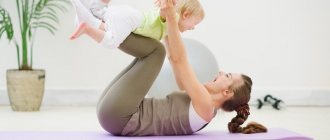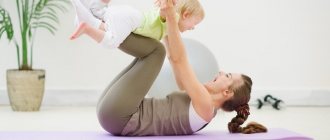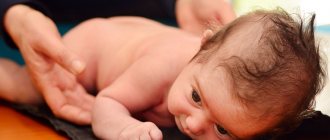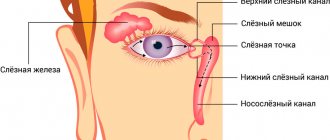In the first weeks of life, children do not yet fully use the organs of hearing and vision; they rely more on tactile sensations. Therefore, they are very sensitive to any kind of touching and hugging, including massage.
According to experts, massage from the first month of life helps the child increase immunity and form correct posture, normalizes digestion and relieves colic, and also improves blood circulation. Massage is important for the development of a child: it replaces gymnastics and has a positive effect on the musculoskeletal and nervous system.
Before mastering a set of exercises on your own, consult your pediatrician: there are a number of cases when massage for children can only be performed by a specialist. And if you have some diseases, massage is completely prohibited. These include, but are not limited to, acute infections, heart or blood problems, and serious skin damage.
If your doctor has allowed you to do a massage at home, pay enough attention to preparing for the process:
- You should not massage immediately after your baby wakes up or when he is hungry. Ideally, about an hour has passed since feeding and the baby is in a good mood.
- Make sure the room is warm. The optimal temperature is considered to be in the range of 20-23 degrees. If you notice that your child's nose is cold or hiccups appear, these are sure signs that the baby is freezing.
- During the session, remove all jewelry from your hands, and also check that your nails are short enough and not sharp. Babies' skin is very sensitive, and any aggressive external influence can cause irritation. Wash your hands thoroughly with soap.
- Prepare your work area. This can be a changing table or a regular table, as well as any other flat surface. It should be stable and wide enough to keep the baby safe. Lay down an absorbent diaper and make sure there is a sheet or blanket nearby to cover your baby after the procedure. Massage oil and other necessary items should also be within an accessible distance.
If all the previous points have been completed, it’s time to prepare your baby to start the massage. Take him in your arms and hold him slightly in an upright position. This will help release excess air that may have accumulated in the stomach and avoid regurgitation during the massage.
How to massage newborns
Babies' bodies are very fragile, and their skin is delicate - especially in the first months of life. Therefore, any massage movements should be gentle and stroking. It is best to move in the direction of lymph flow: from the tips of the toes towards the buttocks and from the palms to the shoulders.
It is important to remember that babies under three months should not massage the inner thighs, armpits, areas under the knees and in the elbows. Also try to avoid interaction with the fontanel area; this area is now very tender and sensitive. Before starting the procedure, make sure your hands are warm enough. It's easy to warm them up: just rub one hand vigorously against the other for 3-10 seconds.
The skin of newborns is very thin, the concentration of lipids (fat-like substances) on its surface is lower than that of adults. Therefore, babies often develop cracks and redness. When practicing massage, you can use a special oil that will eliminate dry skin and relieve irritation. But you need to be especially careful about the composition of the product so as not to cause unwanted allergies.
My Sunshine® care and massage oil is ideal for restorative massage and baby skin care. Glides well on the skin without a sticky effect. Contains a complex of sea buckthorn, pine nut and dwarf cedar oils. Softens baby's skin, making it soft and silky. Hypoallergenic*, tested and recommended by pediatricians for babies from birth. One package will last for months.
It is important to remember that the oil should first be warmed in your hands and only then applied to the child’s skin.
During the session, smile at your baby, talk tenderly to him, talk through your actions and their benefits for the body. Tender maternal touches filled with love are the best elixir of health for a newborn.
The duration of the massage is about 10-15 minutes.
Differentiated massage for a child
Doctors often prescribe general differentiated massage number 10 or 15 for children under one year of age, which puzzles parents. Not only does it have a number, like a diet, it also has a name. The number is the number of sessions, and differentiated is a characteristic note for the children's massage therapist with whom this procedure needs to be carried out. This massage is not recommended for mothers to do themselves; it requires certain knowledge. No online courses will teach you this if you don’t have basic medical education. Children's differentiated massage for infants represents the application of the same principles as described above, only on a whole-body scale. Babies under one year old always receive a general massage and areas with decreased and increased tone are more often in the limbs, a difference in tone between the right and left half of the body, more tense arms or vice versa legs, etc. Each child is a new individual set of characteristics of the neuromuscular and other systems. It’s only at first glance that newborns are similar, but when you start to conduct an examination, then each one has moments that do not always constitute a diagnosis and require the attention of a massage therapist. Clenched fists, curled toes, asymmetry of torso tone when lying like a banana, habitual head rotation, tension in the muscles of the shoulder blades, hips, weakness of the shoulder girdle, etc. There are a lot of such symptoms and they can be present in a child in varying quantities and mixed up. All this needs to be identified and worked with correctly. To bring the totality of similar symptoms in a child back to normal, a differentiated massage is performed.
Abdominal massage
This type of massage helps improve the functioning of the child’s digestive system and relieve him of colic. The baby needs to be gently placed on his back, with your hands placed on his tummy, avoiding strong pressure. If you hold your hands in this position for several minutes, the child gradually calms down and his abdominal muscles relax.
After this, it is recommended to start moving clockwise, gently outlining a circle. Try to avoid touching the genitals and the area of the right hypochondrium.
If you want to improve the passage of gases in your baby, try bending the baby’s legs while massaging the abdomen (the so-called “frog” exercise, which we will discuss in more detail below).
At the end of the abdominal massage session, you can give a few slow soothing strokes.
How to properly massage a child under one year old
Complex manual effects on the musculoskeletal system and skin are called massage.
Massage procedures stimulate metabolism, improve blood supply to organs and have a beneficial effect on the child’s neuropsychic health. Does a 0-3 month old baby need a massage? This is a question that the pediatrician will answer after examining the baby. Depending on the technique, massage will help normalize muscle tone, correct musculoskeletal disorders and joint deformities. Massage can be preventive and therapeutic (general or local). A visiting nurse will show you how to properly massage a child under one year old. Preventive massage is recommended for all children. And for therapeutic purposes there are certain indications:
- malnutrition;
- delayed motor development;
- congenital hip dislocation, hip dysplasia;
- congenital torticollis, clubfoot;
- flat-valgus position of the feet, rickets;
- perinatal pathology of the nervous system.
A general relaxing massage for a child with hypertension is prescribed by a pediatrician as part of complex treatment. As a rule, massage treatments are complemented by drug therapy and physiotherapy.
Face massage
The baby's facial muscles often experience severe tension when crying or feeding. To relax them and gently prepare them for the speaking process, you can massage them regularly. All movements are very gentle, using your fingertips. Gentle pinching movements improve blood circulation in the cheek area. They can also be stroked: from the area of the wings of the nose towards the ears.
The forehead is massaged from the bridge of the nose to the temples, through the eyebrow area.
With a gentle movement of her fingers, the mother helps the baby smile, stretching the corners of the lips in different directions. Another movement you can use to relax your jaw is to place your finger in the chin socket and gently pull back your lower lip.
Gentle massage of the baby's ears is another useful technique. It activates many biologically active points located throughout the surface of the shell.
Children's massage: methods and techniques
Therapeutic baby massage is a fairly active therapeutic method, the essence of which is to provide dosed mechanical irritations to the surface of the baby’s body. In children's massage, the same techniques are used as in classic, but all movements are carried out softly and gently. Of course, not all classical massage techniques (especially shock vibration techniques) are recommended for a baby in the first year of life. In a classic massage for children, there are only four techniques: vibration, stroking, kneading, rubbing.
- Stroking. This technique provides a gentle effect on the nerve endings of the skin of children. Stroking therapeutic baby massage is performed with very gentle and light movements that have a relaxing effect. Stroking the skin relaxes the muscles and also enhances the inhibitory processes occurring in the cerebral cortex. This technique is performed with the palm of the hand and a gentle touch. It is this baby massage that is used in the first months after the birth of a child. It is also worth giving preference to in case of increased excitability.
- Trituration. This technique is a deeper and more intense stroking. Rubbing promotes good muscle relaxation and reduces the excitability of the nervous system. The technique is carried out with several fingers and the palmar surface of the hand. The massage therapist makes circular movements from the hand to the shoulder. The movements are performed more energetically and actively than when stroking, since there is an active effect on the deep layers of the skin.
- Kneading. This technique of children's therapeutic massage is almost similar to rubbing, but during it a deeper effect is produced. The massage therapist uses three fingers (middle, index, ring) to simultaneously perform progressive and circular movements, while very vigorously kneading the muscles.
- Vibration. It is carried out with one, two or all fingers at once. Pressure is applied only with the fingertips, palm, palmar surfaces of the fingers or the supporting part of the hand.
Back massage
For this massage, gently place your baby on his tummy. First, make a few light stroking movements along the entire surface along the spine from the shoulders to the baby’s butt and back.
Then the same movements can be repeated in the direction from the spine to the sides and proceed to rubbing. We place our palms on both sides of the spine. We begin the massage: we perform circular rubbing of the back, moving from top to bottom and back.
Then move to your shoulders, making movements from right to left.
It is permissible to do gentle patting and pinching on the back, constantly monitoring the intensity of movements.
You can finish the back massage with leisurely strokes, as at the beginning of the procedure.
Conditions for massage
Carry out the procedure in the most comfortable conditions. Maintain the room temperature at about 25 degrees and normal humidity.
Be sure to use oil and cream. Use only hypoallergenic, fragrance-free products that ensure smooth glide of your hands over the body. Be sure to wash your hands before the procedure; they should be warm. The techniques of stroking and rubbing are the main ones in the process.
Hand massage
Experts advise starting massage of children's hands with working on the hands. You can gently knead and gently pull each of your baby’s fingers. Such movements help children develop fine motor skills and speech.
Then we move to the palm and stroke its entire surface in a circular motion.
After which we continue the massage: gently bend and straighten the arms at the wrists.
We gradually move to the area of the forearm and shoulder: with one hand we carefully support the child’s hand, and with the other we stroke from the base of the hand towards the armpit, and then return down the outside of the arm. We also perform all these manipulations with the child’s second hand, carefully moving it along the muscles. Experts recommend repeating each movement 3 to 5 times.
It is useful to lift the child’s arms up and gently move them in a circle, and then shake them a little. This massage helps relieve excess tension in the upper limbs and improves lymphatic drainage.
Therapeutic massage for infants for hypertension
Infants need massage in any case, especially for a baby with signs of hypertension, namely:
- tightly clenched fists;
- legs and arms tightly pressed to the body;
- short and rapid sleep;
- throwing the head back while crying and arching the whole body.
In newborns, these are natural conditions, but it is recommended to relieve tension with massage, otherwise the baby will be in a state of discomfort for a long time. In any case, even if you find such signs, you cannot make a diagnosis yourself. It is necessary to immediately consult with a neurologist, only then begin the massage.
Doctors recommend starting from the feet, thanks to which the child’s musculoskeletal system develops better.
Movements during massage for hypertension in an infant.
Legs
First, take the baby's left leg in your hand, apply a little pressure on it, move towards the hip, and then return back. Such movements are performed 5-6 times on one leg.
The foot massage technique is as follows: the thumb of your hand is in the central part of the sole, and the remaining fingers are on the back of the foot. In this position, the hands make spiral movements. Do the same with the right leg.
Buttocks and back
Massaging the buttocks should be done with light pats. Do not press on the body; before and after patting, gently stroke the buttocks.
Next up is the back. First of all, warm it up by stroking it with both hands. You should not put pressure on the spine; it is better to avoid manipulation in this area. From the neck to the buttocks, gently move your palms, and in the opposite direction, on the contrary, touch your back with the back of your hands. The herringbone exercise is also appropriate. It is done using the palms of both hands: stroking from the spinal column to the sides.
Chest and belly
Breast massage also requires a special technique. With both hands, take the child’s arms and move them to the sides, then vice versa, cross them over the chest. Repeat similar movements, like the previous ones, on your feet 5-6 times.
Place your right palm on the baby's belly and stroke it clockwise with light pressure. With the help of this movement, peristalsis improves.
Then take both of the baby’s legs in your hands and bend them towards the tummy, applying a little pressure. Exercise effectively relieves gases accumulated in the intestines.
Hands
Next, massage your hands. It is no different from massaging the legs: the technique is described above. Perform the movements on each child’s hand 5-6 times.
During the massage, do not move too quickly. Carry out the entire procedure smoothly: the massage is relaxing and is designed to calm the child, and not excite him.
0 0 votes
Article rating
Foot massage
To massage the legs, the baby is usually placed on his back. Just as in the case of pens, movements begin with the fingers: they are carefully pulled out and lightly pressed on the pads. There are a large number of biologically active points on the feet, so it is useful to pay enough attention to them, stroking the entire surface.
Then you can smoothly move higher, making gentle movements from the foot up to the groin. Be careful and remember that experts advise not to massage the inner surface of the legs and the area under the knees.
If your baby suffers from colic, you can do the “frog” exercise with him - carefully take the baby by the ankles, bend his legs at the knees, press them to his stomach, and then spread them apart. This sequence of actions is repeated 3-5 times.
As the final stage of the foot massage, you can take the baby by the ankles, lift the legs up and gently shake: this simple action improves blood circulation and lymphatic drainage.
Whatever massage you do, it is important to perform each action with love, avoiding mechanical repetition. You need to be especially attentive to the baby’s reactions, his condition before the procedure and after the session. If you have any difficulties or doubts, it is better to consult with your doctor or a child massage specialist.
Contraindications for massage
Despite the beneficial effects of massage on all organs and systems of the baby, as well as the restorative effect on the body as a whole, there are a number of contraindications to its implementation:
- diseases in the acute stage, including allergic manifestations;
- colds and viral diseases with fever;
- congenital heart defects with circulatory failure;
- severe rickets and severe dystrophy;
- large hernias;
- severe diseases of the liver and kidneys, accompanied by impaired organ function;
- diseases of the musculoskeletal system with increased bone fragility.
The features of gymnastics for the development of an infant at 6 months will be discussed further.

